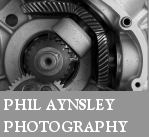


A 7 h.p. V Type Engine for Solo or Sidecar Use.
RUDGE-WHITWORTH, LTD., of Coventry, have decided to market a 7 h.p. twin-cylinder machine which is suitable for solo or side-car use. It is well known that the Rudge Co. have been studying the twin- cylinder question for some time past, and have had many designs on paper, but the new production which forms the subject of the drawings and photographs accompanying this article will be found to follow very closely Rudge practice in engine design.
Despite the large capacity of the engine, viz., 998 c.c, the new Rudge twin gives no impression of clumsiness - indeed, the latest design is a very taking machine in appearance, its symmetry at once evoking favourable comment. As regards the bicycle portion of the machine, this follows Rudge practice in every particular, so that it is the engine only with which these notes deal. Single and twin Rudge engines are interchangeable in the standard design of frame, which is surely an attractive point. The multi-gear is of precisely the same design as on the 3½ h.p. model, and, of course, belt drive is used. What may seem curious on first thoughts is that belts last as long on the big twin as on the 3½ h.p. mount, but this is due to the more even pull of the twin as compared with the single.
Features of Design.
The cylinders, which have a bore and stroke of 85 X 88 mm., are set at an angle of fifty degrees, and are désax&eactute; or offset in relation to the crankshaft to the extent of half an inch. Forked big end bearings are used, fitted with rollers, and roller bearings are also used at the small ends. The offsetting of the cylinders is claimed to have a beneficial effect in equalising the lubrication. Despite the fact that there are no baffles to either cylinder, it is found in practice that the cylinders are quite evenly lubricated, and, in fact, during the tests the engine has undergone, the first trouble with a sooted plug has yet to be recorded.
Simplicity in the Timing Gear.
The timing gear is very neatly arranged, only three timing gear wheels being used. The two cams are, of course, similar m shape, and moreover the four rockers are interchangeable, which system is an advantage in assembling the engine, as obviously it is impossible to replace a rocker in its wrong position.
The valve lifters are very neatly arranged. Brackets are cast with the crank case to support the valve lifter wire, the wire casing for the rear cylinder being disposed underneath the projecting timing gear case. The inlet valve rockers are much bigger and sturdier than on the single-cylinder machine. The pistons are of the standard design, having flat tops and a piston ring top and bottom with diagonal slots, the walls of the pistons lying recessed at the sides. The valves are the same as those used on the 3½ h.p. machine.
The new Rudge - we named it the "Rudge Multwin" in the absence of something better - has great promise. These who have been privileged to try it up to the present are quite enthusiastic in its praises. Right from the commencement the engine has given no trouble, despite the fact that it has been subjected to the most rigorous tests. For instance, in the first six days of its existence it had covered a thousand miles, mostly in connection with the "Rudge Mail Service," which consists of sidecar carriers running backwards and forward between the Rudge Works at Coventry and Birmingham with several hundredweight of goods. A change of drivers was provided, and the twin was kept at work from early morning till late at night. In addition, the machine has been taken over several severe trials courses in the Midlands, and up all the test hills on the Cotswold Range. Birdlip is no match for the outfit, and it has proved its ability to start from a stand still on this steep hill. The Old Wyche at Malvern has been scaled with ease on this powerful newcomer. With a 3¾ to 1 top gear, the new twin with sidecar attached will keep up a steady fifty miles an hour, and users assure us of the remarkable absence of vibration in the engine.
Economical Running.
As regards consumption, with a sidecar it has been found to be in the neighbourhood of fifty miles per gallon on difficult roads, but it is hoped to do better than this later. The Rudge tank design is eminently suitable for a sidecar, for it will be remembered that the large tank is used solely for petrol, and has a capacity of 2¼ gallons. The oil is carried in a special compartment at the rear of the seat tube, and the oil pump is operated by a pedal on the right footrest.
Shortly we shall be able to speak of the new Rudge "Multwin" from practical experience on the road.
The Motor Cycle, July 2nd, 1914. p23.